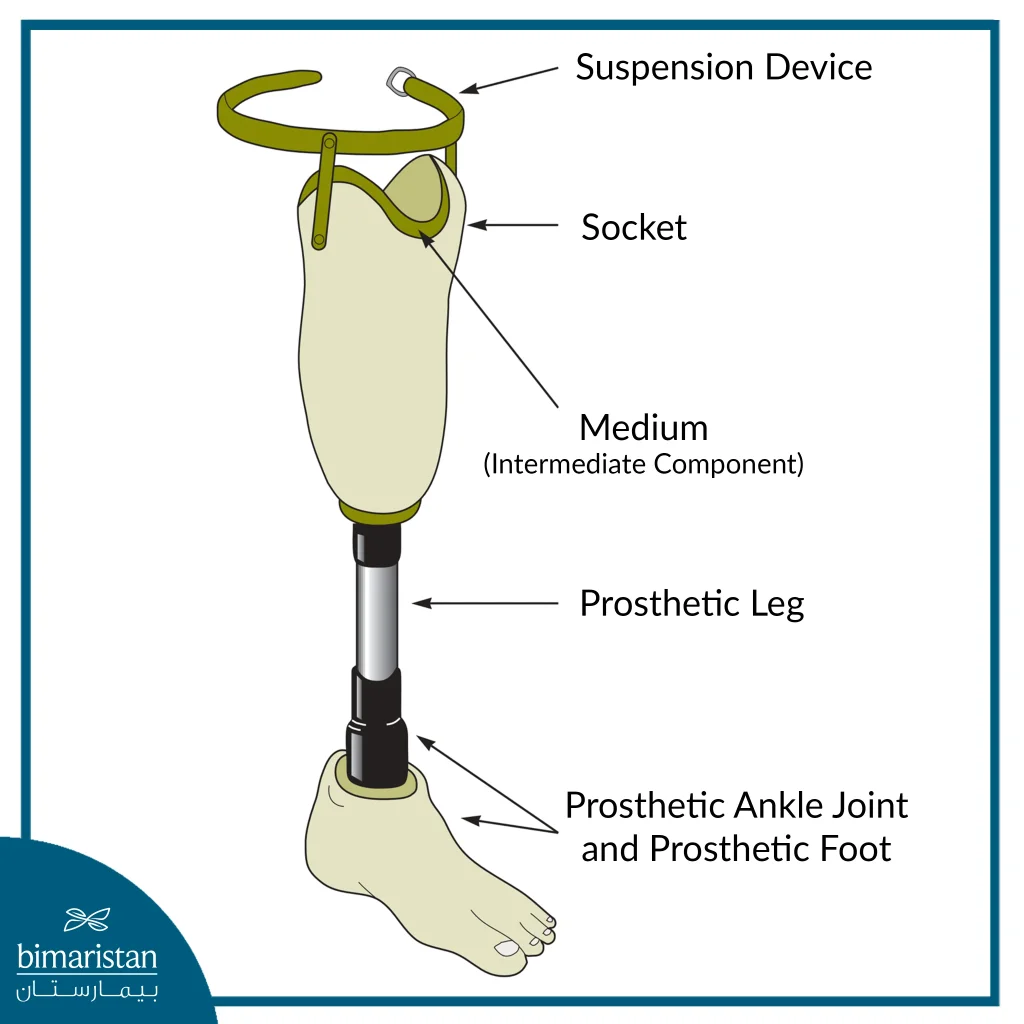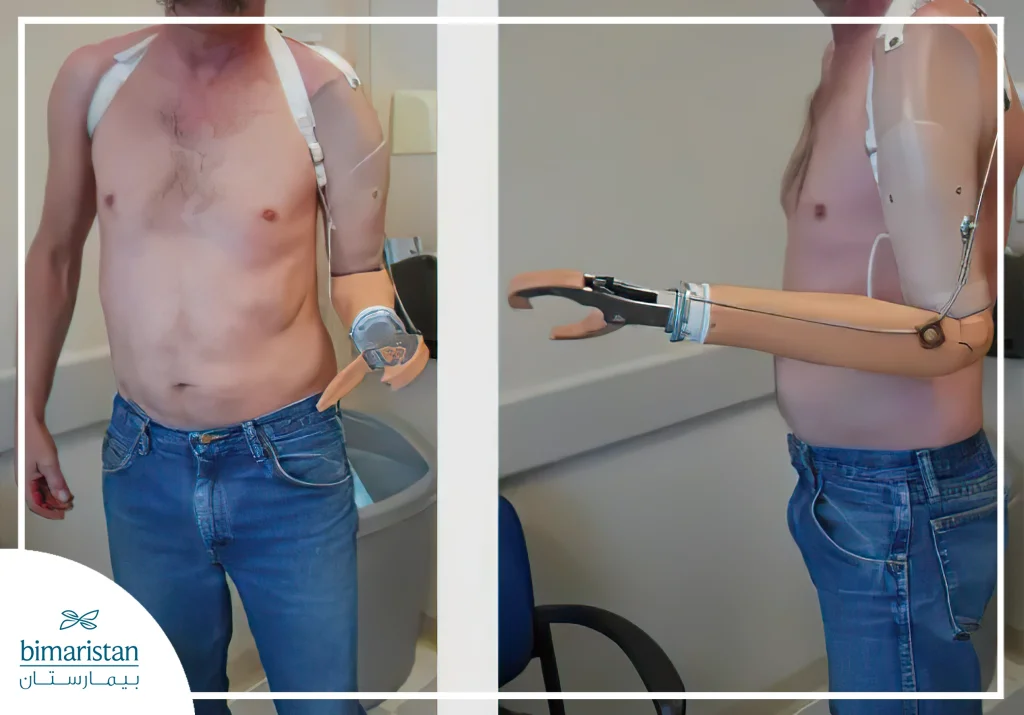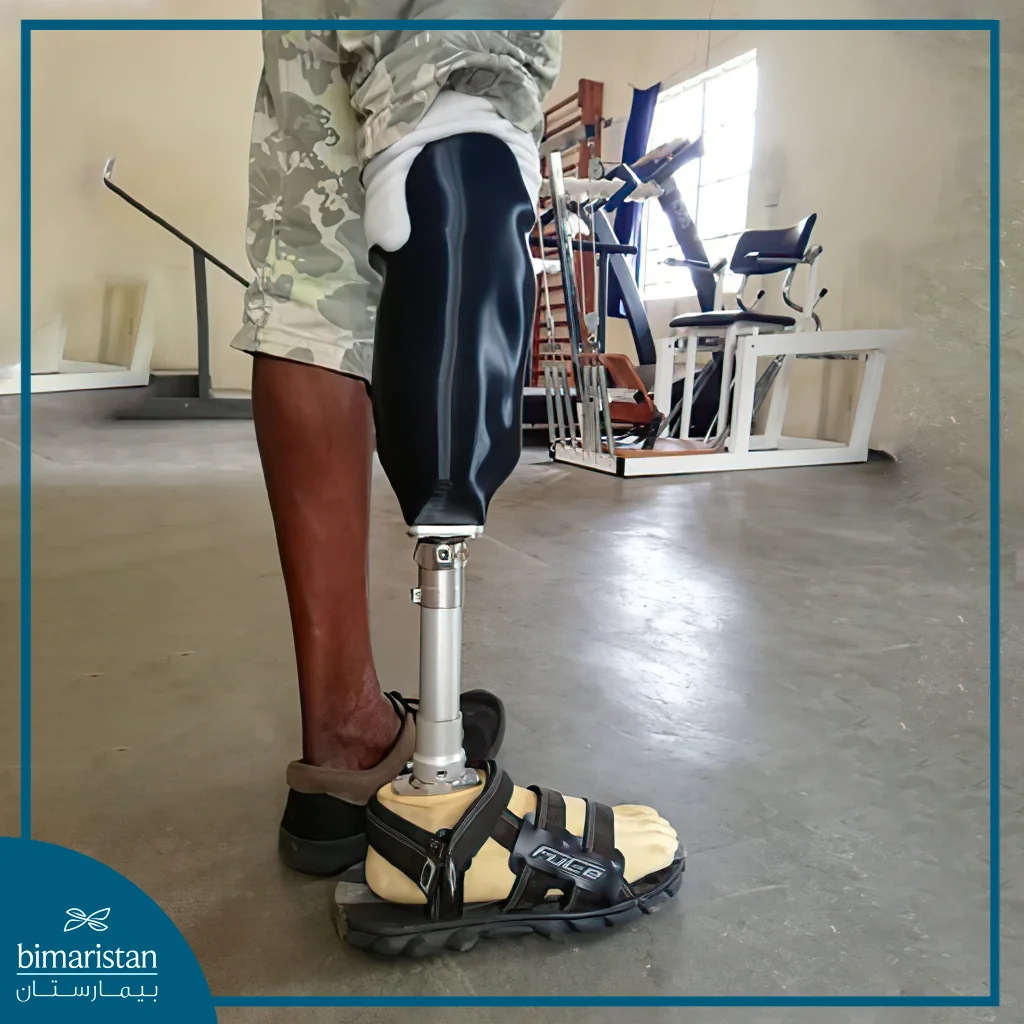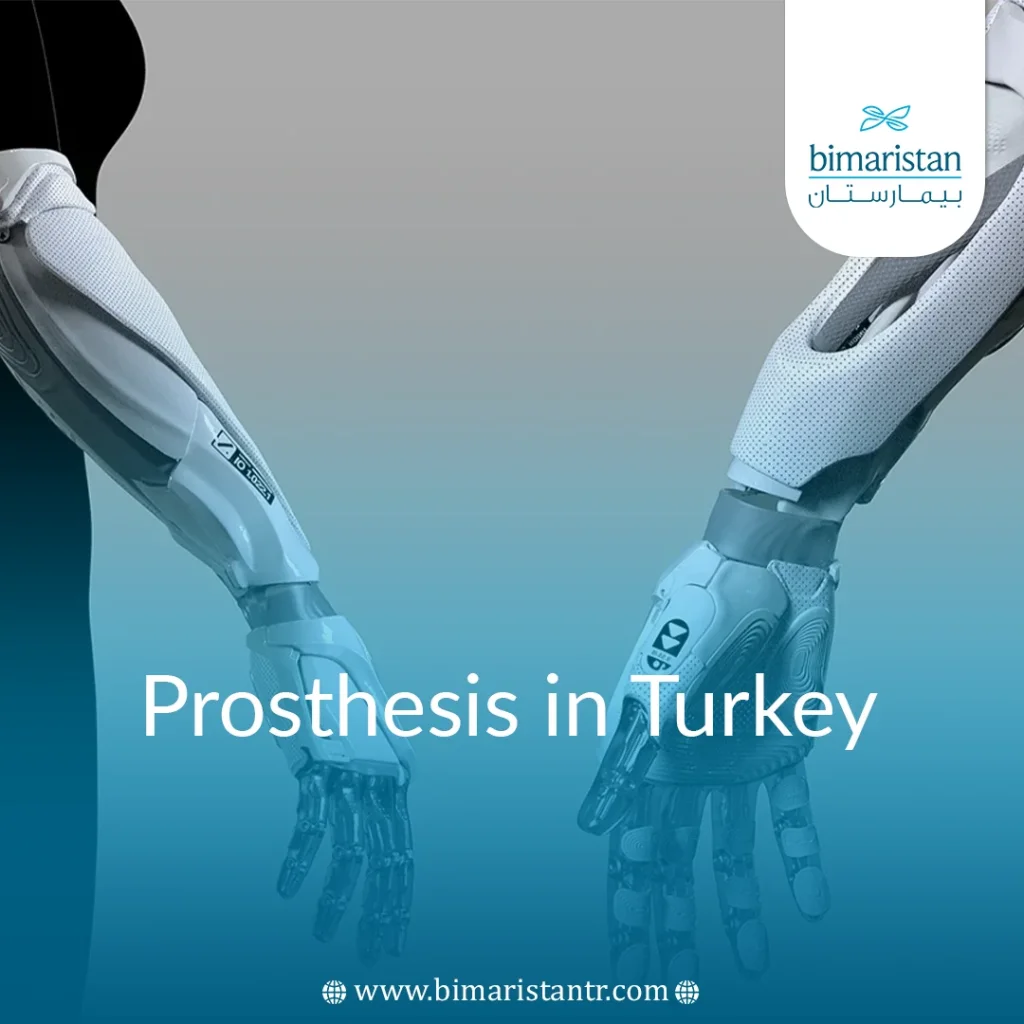Prosthesis presents a new opportunity in life for those who have lost a limb. Turkey offers the chance to reclaim your normal life with trustworthy, guaranteed hands at the most affordable prices.
Currently, in Turkey, doctors can install prosthetic limbs for patients who have lost a limb. Turkey has made significant advancements in this field due to an increase in the number of amputation surgeries, primarily due to vascular problems in the severed limb.
Can I return to my everyday life after losing one of my limbs? How will I feel after installing artificial limbs? Will I be able to walk comfortably? To answer all of these questions, follow us in this article.
Prosthesis in Turkey
Amputee legs and arms in patients often lead to psychological disorders such as depression, so they need great support. Prosthesis will provide patients with a better life in terms of independence in their daily tasks, as well as relieve them from the depression resulting from their loss.
There are many types of artificial limbs in Turkey, each serving the patient’s needs and aiming to improve their quality of life. These types depend on the location of the amputation and the patient’s desired purpose for the prosthetic limb.
Depending on the location of the amputation in the patient, the number of joints in the artificial limb prosthesis varies (ankle, knee, wrist, elbow). Prosthetic limbs used for amputations above the knee, for example, differ from those used for amputations below the knee.
Bimaristan Medical Center in Turkey offers all types of prostheses. Its specialized team provides all forms of medical support for amputees, from surgical procedures to the latest technologies and post-prosthetic limb installation care.
Components of prosthesis in Turkey
Prosthetic limbs in Turkey consist of several parts that resemble a natural limb and mimic its movements. Despite their differences in types, shapes, and functions, they generally share the following parts when designed:
- Socket (stump holder): The upper part of the prosthetic limb, which surrounds the trunk and attaches to it, is one of the most critical parts of prosthetic limbs and is sometimes covered with a layer of silicone on the surface.
- Intermediary: A material or cushion between the stump holder and the socket to reduce friction, relieve pressure, and maintain trunk safety.
- Suspension Device: Its function is to fix and keep the prosthetic limbs suspended from the trunk. It varies from one prosthetic limb to another, as some rely on an air pump that creates a vacuum chamber to fix the limb, others have a unidirectional valve that also releases air, and some are fixed by straps and laces.
- Joint: This replaces the amputated joint and may sometimes contain a hydraulic device or a small processor (smart chip) that allows movement resembling a real joint. It enables the person to move naturally, such as walking or gripping objects. There are prosthetic limbs that contain multiple joints.
- Body of the Prosthetic Limb: Mimics a leg or forearm.
- Terminal Device: The artificial hand or foot, which varies depending on the limbs used. Some limbs have a fixed hand (the cheapest), while others have artificial limbs that resemble a natural human hand in movement, manufactured based on medical and engineering studies.
In addition, prosthetic limbs are blended with fabric and synthetic skin of the amputee’s skin color to look somewhat real for cosmetic purposes. Some patients, such as athletes, prefer to install exposed prosthetic limbs because they are lighter in weight and require faster maintenance in competitions.
Athletes with amputated limbs can now install prosthetic limbs compatible with their sports, such as running and swimming. At Bimaristan Medical Center in Turkey, various types of prosthetic limbs are available to meet different needs.

Types of prosthetic limbs in Turkey
As mentioned earlier, the types of prosthetic limbs in Turkey vary according to the location of the amputation and the patient’s needs, and based on that, they are classified into:
Upper limb prosthetics in Turkey
The human hand is highly complex and contains numerous joints. Nevertheless, many artificial alternatives for limbs have been developed in our modern age, and all of them are available in Turkey. These include:
- Passive Prosthetic Limbs: These are fixed alternatives for limbs that do not move and are the least expensive option.
- Prosthetic Limbs Operated by Body Movement (Bionic arms and legs): Installing this type requires the safety of the shoulder joint or the corresponding limb and allows the patient to perform many movements. It is the most common type because it is cheaper than others and requires less maintenance.
- Prosthetic Limbs Operated by External Power: These do not rely on body movement. Electrical poles are connected to healthy muscles, enabling the patient to move in a manner similar to natural movement and providing a better grip strength than those operated by body movement alone. The safety of the shoulder or corresponding limb is not required when installing prosthetic limbs of this type.
- Hybrid Prosthetic Limbs: This type is installed at a higher level of amputation in the upper limb. It includes upper limb prosthetics that operate by body movement and prosthetics that operate by external power.
- Prosthetic Limbs Designed for Athletes and Craftsmen: These are used by individuals whose professions rely on their hands, such as carpenters or golf players.

Lower limb prosthetics in Turkey
Several types of lower limb prosthetics are installed in Istanbul to serve the patient’s needs and assist them in walking naturally, including:
- Ankle-foot prosthesis (prosthetic leg below knee): These use hydraulic devices and small electronic processors to ensure movement compatibility at the appropriate time, allowing the patient the ability to walk. The movements adapt to changes in the patient’s walking speed, and the patient can also adjust the angle of foot elevation to wear the desired footwear (whether with high heels or without heels).
- Knee Prosthesis: They provide more stability when standing and ease of movement during walking, protecting the patient from falls. There are multi-axis systems that provide many movements simulating the natural knee joint.
- Prosthetics Designed for Athletes: These are needed by athletes such as runners or swimmers.

Important tips after prosthesis
To fully benefit from your prosthetic limb, get accustomed to it, and recover quickly from the amputation surgery while avoiding all risks and complications, you should follow the following tips daily after installing prosthetic limbs:
- When going to bed, remove the prosthetic limbs and inspect them for damage or looseness in their components. Also, check the stump for inflammation or irritation.
- Clean the stump and apply the prescribed ointments, massaging the skin.
- Wrap the stump when not wearing your prosthetic limb, and constantly inspect it for sores or wounds. If you notice anything, contact a specialist immediately.
- Perform the daily exercises your physical therapist prescribes to rehabilitate your limb and regain as much movement as possible.
- Clean your prosthetic socket with water and soap.
- Wear clean, dry socks when fitting prosthetic limbs.
Causes of amputation
The reasons for amputation vary depending on the cause. Amputation is divided into two types: planned amputation and emergency amputation (not planned). The decision to amputate as a therapeutic solution is challenging for the surgeon, and despite that, when performed, they strive to preserve as much healthy tissue as possible without excising it.
A patient may undergo amputation due to one of the medical conditions that have caused permanent damage to the limb, making its preservation a risk to the patient’s life due to tissue death and toxin release into the body. Among these reasons are:
- Vascular diseases such as diabetes and peripheral artery diseases lead to decreased blood flow to the limbs, causing tissue death and necrosis, eventually leading to amputation.
- Cancer, often in patients over the age of 60.
- Congenital defects.
- Accidents, such as car and motorcycle accidents, where amputation may be performed as an emergency upon arrival at the hospital.
- Infection and gangrene in the limb lead to its death.
Amputation surgery in Turkey
When the decision to perform amputation, whether planned or emergency, is made, the patient is cared for and prepared for the next stage before surgery (awareness of the risks of limb preservation and assurance of the availability of prosthetic alternatives to serve their needs). The patient is also medically prepared in a well-equipped hospital, where blood sugar, blood pressure, and other bodily functions are regulated to ensure the patient is ready for surgery.
The surgeon aims to remove only the damaged tissue and preserve healthy tissue. The muscles are then reassembled at the end of the patient’s amputated limb, ensuring good blood supply to them, after which the surgical site is closed with skin.
As a result, a half-spherical shape called the stump is formed at the end of the amputated limb (the remaining part of the limb after cutting off a portion of it). The job of both the doctor and the patient (through following instructions) is to maintain its safety and protect it from injury or disease.
Swelling and fluid buildup occur during the period following surgery, in addition to pain in the stump. The postoperative treatment continues until the stump stabilizes for 6 to 10 weeks.
The patient may experience the phenomenon of a phantom limb, which is feeling pain in the location of the amputated limb despite its absence. This phenomenon varies from person to person and may be psychological or organic. Some types of phantom limb pain heal when the patient looks in the mirror and convinces themselves that their limb is still there, alleviating the pain.
After this period, the stump stabilizes somewhat, and the patient is ready to have temporary prosthetic limbs fitted. These are temporary because the stump has not taken its final shape. Permanent prosthetic limbs cannot be fitted as they will not be stable (due to changes in stump size, sometimes swelling and sometimes shrinking).
The stump stabilizes and takes its final shape within a period ranging from 6 months to 18 months, and then permanent prosthetic limbs can be fitted and securely attached. The patient can choose the appropriate type of these prosthetic limbs to meet their needs so they can be fitted.
References:
- Limb Prosthetics Services and Devices, Bioengineering Institute Center for Neuroprosthetics Worcester Polytechnic Institution.
- A practical guide for Amputees.

